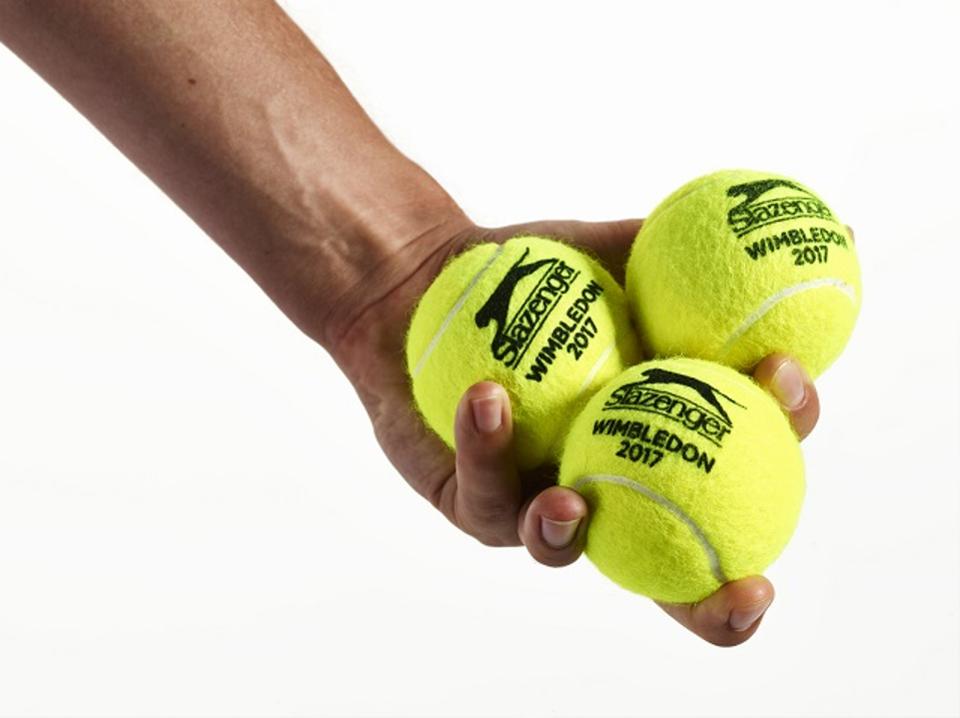New balls please? Yes, but only if they come with cognitive data analytics. Whether you like the sport of tennis or not, it’s hard to ignore the fact that summer is Wimbledon season.
copyright by www.forbes.com
 The UK capital city of London is known for grand buildings, warm beer and its native inhabitant’s sometimes misunderstood abruptness of attitude (spoiler alert: Londoners are actually warm and lovely people). London is also known for Wimbledon – a quiet and leafy suburb that is quiet and unassuming for 50 weeks of the year until the world’s sporting glitterati join royals and celebrities to see two players bash a rubber ball over a net at each other for up to five hours at a stretch.
The UK capital city of London is known for grand buildings, warm beer and its native inhabitant’s sometimes misunderstood abruptness of attitude (spoiler alert: Londoners are actually warm and lovely people). London is also known for Wimbledon – a quiet and leafy suburb that is quiet and unassuming for 50 weeks of the year until the world’s sporting glitterati join royals and celebrities to see two players bash a rubber ball over a net at each other for up to five hours at a stretch.
Sports and Data
For almost 30-years now IBM has been providing Wimbledon with technology. What started off as stopwatches and electronic net ‘beep’ systems eventually progressed to camera-enabled smart line judges (leverage of the Hawkeye system) and finally onward into the use of big data analytics to digitize player behavior and tactics. Today, it’s all about personalizing the viewing experience. According to IBM, “Sports and entertainment companies compete on compelling content, but there is now more content created every day than any of us can consume. With more channels, more devices and more video content, consumers can now access personalized content anywhere, anytime. That is why personalizing the fan experience is a top priority for so many telecom, media and entertainment companies.”
For the fans, not just the coaches
Every year IBM attempts to bring new layers of technology to bear upon the Wimbledon championships. Recent augmentations have seen IBM provide information designed to inform not just tennis coaches and players, but also for fans who want to know what it will take to win in a game where margins for winning and losing are becoming increasingly exacting.
The Slamtracker ‘Cognitive Keys to the Match’ feature was built on IBM’s predictive analytics technology (SPSS). This mines over eight years of Grand Slam Tennis data (~41 million data points) to determine patterns and styles for players when they win. Players and fans alike got an insight into what comparable players with comparable styles must do tactically if they are to win a match.
At the All England Club (Wimbledon’s official name) itself, IBM operates a bunker filled full of data scientists whose job it is to number crunch their way through every digitally captured move, play, ball bounce and judging line call throughout each match. Interesting, these guys and girls are mainly tennis pros in the first instance. As detailed previously on Forbes, this is because it’s easier to teach a tennis pro data analytics than it is to teach a data analyst the specific mechanics of professional tennis to a data analyst. […]
read more – copyright by www.forbes.com


New balls please? Yes, but only if they come with cognitive data analytics. Whether you like the sport of tennis or not, it’s hard to ignore the fact that summer is Wimbledon season.
copyright by www.forbes.com
Sports and Data
For almost 30-years now IBM has been providing Wimbledon with technology. What started off as stopwatches and electronic net ‘beep’ systems eventually progressed to camera-enabled smart line judges (leverage of the Hawkeye system) and finally onward into the use of big data analytics to digitize player behavior and tactics. Today, it’s all about personalizing the viewing experience. According to IBM, “Sports and entertainment companies compete on compelling content, but there is now more content created every day than any of us can consume. With more channels, more devices and more video content, consumers can now access personalized content anywhere, anytime. That is why personalizing the fan experience is a top priority for so many telecom, media and entertainment companies.”
For the fans, not just the coaches
Every year IBM attempts to bring new layers of technology to bear upon the Wimbledon championships. Recent augmentations have seen IBM provide information designed to inform not just tennis coaches and players, but also for fans who want to know what it will take to win in a game where margins for winning and losing are becoming increasingly exacting.
The Slamtracker ‘Cognitive Keys to the Match’ feature was built on IBM’s predictive analytics technology (SPSS). This mines over eight years of Grand Slam Tennis data (~41 million data points) to determine patterns and styles for players when they win. Players and fans alike got an insight into what comparable players with comparable styles must do tactically if they are to win a match.
At the All England Club (Wimbledon’s official name) itself, IBM operates a bunker filled full of data scientists whose job it is to number crunch their way through every digitally captured move, play, ball bounce and judging line call throughout each match. Interesting, these guys and girls are mainly tennis pros in the first instance. As detailed previously on Forbes, this is because it’s easier to teach a tennis pro data analytics than it is to teach a data analyst the specific mechanics of professional tennis to a data analyst. […]
read more – copyright by www.forbes.com
Share this: